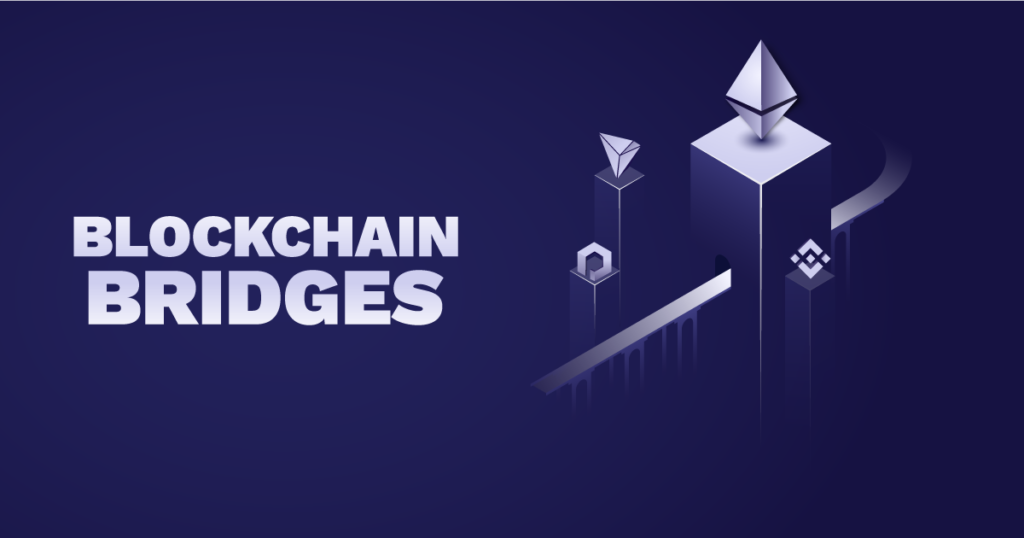What is a blockchain bridge? How does it work?

A blockchain bridge is a tool that enables the transfer of assets from one blockchain to another. Source | CoinDesk author | Compiled by Robert Stevens | Aileen Blockchain Bridge is a tool that enables the transfer of assets from one blockchain to another, addressing one of the main pain points of blockchain — lack of interoperability . Often, Build a token bridge different blockchain assets are incompatible with each other, and the blockchain bridge creates a generational
A blockchain bridge is a tool that enables the transfer of assets from one blockchain to another.
A blockchain bridge is a tool that enables the transfer of assets from one blockchain to another, addressing one of the main pain points of blockchains — lack of interoperability.
Often, different blockchain assets are incompatible with each other, and blockchain bridges create synthetic derivatives that represent another blockchain asset.
If a Solana token is sent to an Ethereum wallet using a blockchain bridge, the wallet will receive a token “wrapped” by the blockchain bridge — converted to a token based on the target blockchain . In this case, Build a cross chain bridge the Ethereum wallet will receive a “blockchain bridge” version of the Solana token that has been converted to an ERC-20 token (the universal token standard for homogeneous tokens on the Ethereum blockchain) .
While blockchain bridges open up new markets and work toward a multi-chain future, they also face security challenges of their own.
1. chain new
Types of blockchain bridges
A one-way bridge that only allows assets to be transferred to the target blockchain, not the reverse. For example, Wrapped Bitcoin (WBTC) allows sending Bitcoin to the Ethereum blockchain (converting Bitcoin to an ERC-20 stablecoin), but not allowing Ether to be sent to the Bitcoin blockchain.
Blockchain bridges such as Wormhole and Multichain are two-way bridges that allow free exchange between different blockchain assets. For example, it is possible to send both Solana Tokens to the Ethereum blockchain and Ether to the Solana blockchain.
Blockchain bridges come in custodial (centralized or trusted) and non-custodial (decentralized or trustless) forms, the difference being who controls the tokens used to create the bridge asset. For example, all WBTC is hosted by BitGo, then BitGo becomes a centralized blockchain bridge. Instead, bridging assets on wormholes are held by the protocol, which means it is more decentralized.
Hardline decentralization advocates may feel that the custody nature of WBTC makes it less secure than decentralized alternatives. In fact, blockchain bridges that decentralize the custody of bridge assets are not necessarily more secure, and the wormhole incident is a typical example.
2. chain new
Why use a blockchain bridge?
There are many benefits to transferring assets from one blockchain to another. First, the target blockchain for asset transfers may be faster and cheaper than the native blockchain. Ethereum in particular, its high transaction fees and slow throughput make it difficult for newbies to get into decentralized finance (DeFi).
If investors move their assets to a layer 2 network — a faster blockchain such as Arbitrum or Polygon sitting on the Ethereum blockchain, they can trade ERC-20 tokens at a fraction of the cost without sacrificing Exposure to Ethereum tokens.
Other investors may use blockchain bridges to take advantage of markets that only exist on another blockchain. For example, the DeFi protocol Orca is only available on the Solana network, but also supports a wrapped version of ETH.
Now, blockchain bridges are gaining popularity. Many DeFi protocols have integrated blockchain bridges, allowing users to convert tokens from different protocols without leaving the platform.
3. chain new
What are the biggest blockchain bridges?
Data from blockchain data analytics platform DeFi Llama shows that as of March 2022, $21.8 billion worth of cryptocurrencies are locked in blockchain bridges. The largest blockchain bridge is WBTC, which accounts for nearly half of the blockchain bridge market, with a total value locked (TVL) of $10.2 billion. DeFi Llama lists Multichain as the largest Cross chain bridge development with a TVL of around $7 billion.
Data from the Ethereum smart contract data research tool Dune Analytics shows that the Avalanche Bridge is the largest Ethereum bridge with a TVL of about $6 billion, followed by Polygon ($5 billion) and Fantom Anyswap ( $4.2 billion).
4. chain new
Is the blockchain bridge safe?
Like all cryptocurrencies, blockchain bridges have risks. Some new decentralized bridges are relatively untested, and even some tested blockchain bridges have security holes. In the week before the Solana cross-chain bridge Wormhole incident, the Bridge Smart Contract Development Services Qubit was also hacked, causing a loss of up to $80 million.
Blockchain analysis firm Elliptic pointed out that the Wormhole was attacked because the attacker minted 120,000 WETH and then withdrawn it without staking any ETH. Later, the high-frequency trading firm Jump Trading made up for the loss, saving the wormhole protocol.
Trust bridges face different risks. Different from the risk of attackers stealing assets by exploiting protocol loopholes, the risk faced by trust bridges is that companies holding pledged assets may be corrupt, or lose control over assets due to negligence, incompetence, or even third-party orders , such as the government requiring the company to freeze its assets.